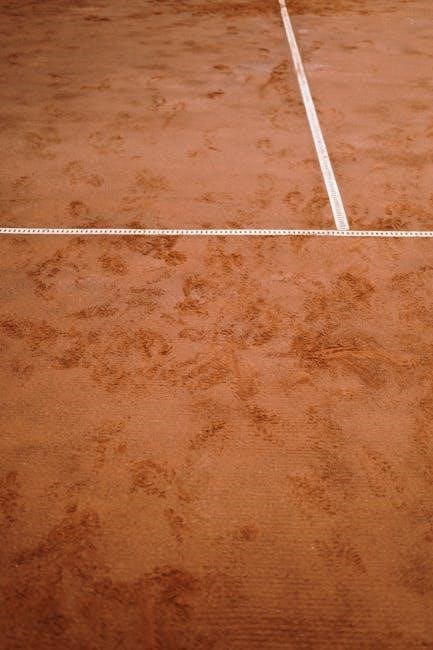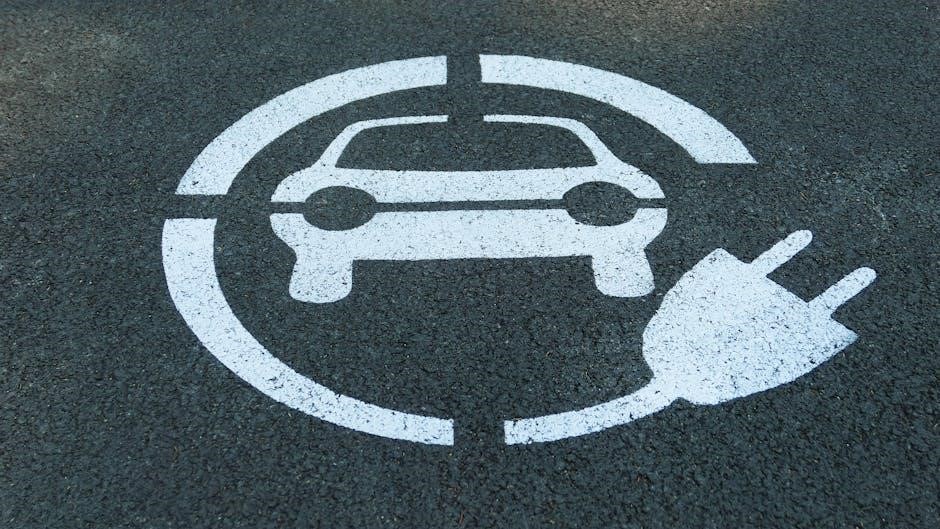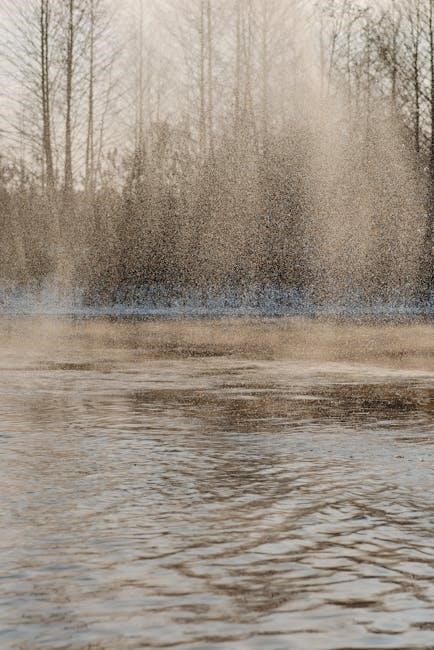Surface area worksheets are essential tools for learning geometry, focusing on calculating the total area of 3D shapes like cubes, prisms, and cylinders. These exercises are designed to enhance problem-solving skills and provide a clear understanding of spatial concepts through practical examples.
1.1 What is Surface Area?
Surface area is the total area covering the exterior of a three-dimensional object. It is calculated by summing the areas of all the object’s faces. For example, a cube’s surface area is the combined area of its six identical square faces, while a rectangular prism’s surface area is determined by adding the areas of its length, width, and height dimensions. This concept is fundamental in geometry and is essential for understanding various practical applications, such as construction, packaging, and engineering.
Students often learn to calculate surface area by breaking down complex shapes into simpler components, like nets, which are two-dimensional representations of three-dimensional objects. Worksheets provide step-by-step exercises to practice these calculations, starting with basic shapes such as cubes and rectangular prisms, and progressing to more complex forms like cylinders and cones. These exercises help students visualize and understand how surface area applies to real-world scenarios, making the concept more tangible and accessible.
By mastering surface area calculations, students develop a stronger grasp of spatial reasoning and mathematical problem-solving skills, which are critical in advanced studies and everyday applications. Surface area worksheets serve as an effective tool for building this foundational knowledge.
1.2 Importance of Worksheets
Surface area worksheets play a crucial role in helping students grasp geometric concepts effectively. These resources provide structured exercises that enable learners to practice calculating the surface area of various 3D shapes, such as cubes, prisms, and cylinders. By solving these problems, students improve their mathematical accuracy and problem-solving abilities. Worksheets also serve as a bridge between theoretical knowledge and practical application, allowing learners to visualize and understand complex spatial relationships.
One of the key benefits of surface area worksheets is their ability to cater to different learning styles. They often include visual simulations and word problems, which help students connect abstract formulas to real-world scenarios. For instance, calculating the surface area of a cone or a rectangular prism can be applied to tasks like designing packaging or constructing buildings. Additionally, worksheets provide a sense of accomplishment as students progress from simpler to more challenging exercises, boosting their confidence and motivation to learn.
Overall, surface area worksheets are an indispensable tool for educators and students alike, offering a comprehensive and engaging way to master this fundamental concept in geometry. They ensure that learners develop a strong foundation, which is essential for advancing in mathematics and related fields.

Benefits
Surface area worksheets offer numerous benefits, including improved mathematical skills, enhanced conceptual understanding, and access to free resources. They provide step-by-step exercises, word problems, and visual simulations, making learning engaging and effective for students of all levels.
2.1 Skill Improvement
Surface area worksheets are designed to enhance mathematical skills through consistent practice. By solving problems involving cubes, prisms, and cylinders, students improve their ability to calculate and understand spatial relationships. These exercises progress from basic to advanced levels, ensuring a strong foundation in geometry. The step-by-step approach helps students master techniques, while word problems and visual simulations challenge their problem-solving abilities. Regular practice with these worksheets leads to better accuracy, speed, and confidence in tackling complex geometrical concepts.
2.2 Conceptual Understanding
Surface area worksheets play a crucial role in fostering a deep understanding of geometric concepts. By engaging with exercises that involve calculating the surface area of various shapes, students develop a clear grasp of how different faces, edges, and dimensions contribute to the total surface area. These worksheets often include visual simulations and practical examples, making abstract concepts more tangible. For instance, exercises on cubes and rectangular prisms help students visualize how the arrangement of faces affects the total surface area, while problems involving cylinders and cones introduce the idea of curved surfaces and their calculations.
Additionally, these worksheets encourage students to break down complex shapes into simpler components, enhancing their ability to approach problems systematically. The inclusion of word problems further strengthens conceptual understanding by applying surface area calculations to real-world scenarios, such as determining material requirements for construction or packaging. This holistic approach ensures that students not only memorize formulas but also comprehend the underlying principles, leading to improved problem-solving skills and a stronger foundation in geometry.
Regular practice with these resources helps students transition from basic calculations to more advanced applications, fostering confidence and mastery of surface area concepts.
2.3 Free Resources
One of the most significant advantages of surface area worksheets is their availability as free resources. These worksheets are accessible to everyone, ensuring that students from all backgrounds can benefit from high-quality educational materials. Designed to cater to different skill levels, they provide a comprehensive learning experience, from basic calculations to advanced problem-solving.
Free surface area worksheets are often available in PDF formats, making them easy to download, print, and share; They include a variety of exercises, such as step-by-step calculations, word problems, and visual simulations, which help students grasp complex concepts in an engaging manner. Many resources also offer answers, allowing students to self-assess their progress and identify areas for improvement.
These free resources are particularly useful for teachers and parents seeking to supplement classroom learning or provide additional practice at home. By leveraging these materials, learners can explore practical applications of surface area, such as calculating material requirements for construction or packaging, in a cost-effective and convenient way.

Types of Shapes
Surface area worksheets cover various 3D shapes, including cubes, rectangular prisms, cylinders, cones, and spheres. Each shape requires specific calculations to determine its total surface area, helping students understand geometric properties and spatial relationships.
3.1 Cubes
A cube is one of the simplest and most common 3D shapes studied in surface area worksheets. It is a regular solid with six identical square faces, eight vertices, and twelve equal edges. The surface area of a cube is calculated using the formula: 6a², where “a” represents the length of one side. This formula is derived from the fact that a cube has six faces, each with an area of a².
Understanding the surface area of a cube is fundamental because it introduces students to the concept of calculating the total area of a 3D object. Worksheets often include exercises where students are given the side length of a cube and asked to compute its surface area. This helps in developing algebraic skills and spatial reasoning. Additionally, visual simulations and diagrams in these worksheets allow students to count unit squares, making the concept more tangible and easier to grasp.
Cubes are also used in word problems, such as determining the surface area of a dice or a box. These practical examples make learning more engaging and relevant. By mastering the surface area of cubes, students build a strong foundation for studying more complex shapes, such as rectangular prisms and cylinders.
3.2 Rectangular Prisms
Rectangular prisms are another fundamental shape explored in surface area worksheets. Unlike cubes, rectangular prisms have six rectangular faces, with lengths, widths, and heights that can vary. The surface area of a rectangular prism is calculated using the formula: 2(lw + lh + wh), where “l” is length, “w” is width, and “h” is height. This formula accounts for the areas of all six faces, ensuring that each pair of identical faces is multiplied by two.
Worksheets often provide exercises where students are given the dimensions of a rectangular prism and asked to compute its surface area. These problems may involve integers or decimals, progressing from simple to more complex calculations. Visual simulations and diagrams are frequently included to help students visualize the shape and its faces, making it easier to understand how the formula applies.
Practicing with rectangular prisms is crucial as it introduces students to the concept of calculating surface areas for more varied and real-world objects, such as boxes or buildings. This skill is essential for advanced geometry and real-life applications, such as calculating material costs for construction projects.
3.3 Cylinders
Cylinders are another key shape featured in surface area worksheets, consisting of two circular bases and a rectangular lateral surface when unfolded. The total surface area of a cylinder is calculated by adding the areas of the two circular bases and the lateral surface area. The formula for the total surface area is: 2πr² + 2πrh, where “r” is the radius and “h” is the height.
Worksheets often include exercises where students are provided with the radius and height of a cylinder and must compute both the lateral surface area and the total surface area. These problems may involve exact values or rounded decimal answers, depending on the complexity. Visual simulations and diagrams are commonly used to help students visualize the relationship between the cylinder’s dimensions and its surface area.
Practicing with cylinders is important for understanding real-world applications, such as calculating the material needed to manufacture cylindrical objects or determining the surface area of structures like pipes or cans. These exercises are available in free PDF formats and are designed to help students master geometric calculations with ease.
3.4 Cones
Cones are another essential shape in surface area worksheets, consisting of a circular base and a curved lateral surface. The total surface area of a cone is the sum of the base area and the lateral (curved) surface area. The formula for the lateral surface area is πrl, where “r” is the radius and “l” is the slant height. The total surface area is then πr(l + r).
Worksheets often include problems where students are given the radius and slant height of a cone and must calculate both the lateral and total surface areas. For example, a cone with a radius of 5 cm and a slant height of 15 cm would require students to compute the exact lateral surface area and then add the base area for the total. These exercises help students understand how to apply geometric formulas to real-world objects, such as calculating the material needed for a conical roof or the surface area of an ice cream cone.
Practicing with cones enhances spatial reasoning and problem-solving skills, preparing students for more complex geometric challenges. These exercises are widely available in free PDF formats, making them accessible for regular practice and mastery.
3.5 Spheres
A sphere is a perfectly round three-dimensional shape where every point on its surface is equidistant from its center. The surface area of a sphere is calculated using the formula 4πr², where “r” represents the radius of the sphere. Surface area worksheets often include exercises involving spheres, such as finding the surface area when given the radius or diameter. For example, if a sphere has a radius of 3 units, the surface area would be 4π(3)² = 36π square units.
These exercises help students understand how to apply geometric formulas to real-world objects, such as determining the surface area of a globe or a ball. Worksheets may also include word problems, such as calculating the material needed to paint a spherical object. By practicing with spheres, students develop a deeper understanding of three-dimensional shapes and their properties. These exercises are available in free PDF formats, making them easily accessible for regular practice and skill enhancement.

Features
- Step-by-step exercises for gradual skill development.
- Word problems to apply surface area concepts practically.
- Visual simulations to enhance understanding of 3D shapes.
These resources are designed to make learning engaging and effective, offering free PDF downloads for easy access.
4.1 Step-by-Step Exercises

Surface area worksheets feature detailed, step-by-step exercises that guide students through the process of calculating the surface area of various 3D shapes. These exercises often begin with basic concepts, such as counting unit squares on nets of shapes, and gradually progress to more complex calculations involving formulas for cubes, prisms, cylinders, and cones.
- Exercises start with visual representations, like nets, to help students understand how surfaces unfold and contribute to the total surface area.
- Step-by-step problems allow students to practice applying formulas, such as 6a² for cubes or 2(lw + lh + wh) for rectangular prisms.
- Each exercise builds on the previous one, ensuring a smooth transition from foundational skills to advanced problem-solving.
These structured exercises are designed to improve accuracy, enhance mathematical reasoning, and build confidence in tackling surface area problems. By following the steps closely, students can master the techniques required for success in geometry.
Additionally, many worksheets include visual aids and practical examples, making the learning process engaging and comprehensive. This approach ensures that students not only memorize formulas but also understand the underlying principles of surface area calculations.
4.2 Word Problems
Surface area worksheets often include word problems that challenge students to apply their knowledge in real-world contexts. These problems require students to calculate the surface area of objects like boxes, cans, or even buildings, promoting practical application of geometric concepts.
- Word problems encourage critical thinking and the ability to interpret complex scenarios, such as determining the material needed to cover a cylindrical container or calculating the paint required for a rectangular prism-shaped room.
- Examples include finding the surface area of a pyramid-shaped roof or the label area of a soup can, which helps students connect geometry to everyday situations.
- These exercises often involve multiple steps, such as identifying dimensions, applying formulas, and performing calculations, ensuring a comprehensive understanding of surface area principles.
By solving word problems, students develop the ability to break down complex tasks into manageable parts, enhancing their problem-solving skills and mathematical reasoning. This practical approach to learning surface area makes abstract concepts more tangible and relevant.
Moreover, word problems in surface area worksheets are designed to prepare students for higher-level math and real-world applications, where understanding spatial relationships and area calculations are essential.
4.3 Visual Simulations
Visual simulations in surface area worksheets are interactive tools that help students visualize and explore 3D shapes, making complex geometric concepts more accessible. These simulations often include diagrams, animations, or virtual models that break down shapes into their constituent parts, allowing students to understand how surface area is calculated.
- Simulations frequently incorporate net diagrams, which unfold 3D shapes into 2D layouts, enabling students to see how individual faces contribute to the total surface area.
- Interactive models allow students to manipulate dimensions, such as resizing a cube or adjusting the height of a cylinder, and observe how these changes affect the surface area in real-time.
- Visualizations often highlight specific features, like the curved surface of a cylinder or the lateral surface of a cone, helping students differentiate between various shapes and their properties.
These simulations are particularly effective for visual learners, as they provide a hands-on experience that complements traditional problem-solving exercises. By engaging with these tools, students can develop a deeper understanding of spatial relationships and surface area calculations.
Moreover, visual simulations prepare students for real-world applications, such as engineering or architecture, where understanding and manipulating 3D shapes are essential skills;
Surface area worksheet PDFs are invaluable tools for mastering geometry concepts, offering a comprehensive approach to learning and practicing surface area calculations. These resources cater to diverse learning styles, providing step-by-step exercises, word problems, and visual simulations to enhance understanding and retention.
By utilizing these worksheets, students can gradually build proficiency in calculating the surface area of various 3D shapes, from simple cubes to complex cylinders and cones. The availability of free, downloadable PDFs makes them accessible to everyone, ensuring that cost is no barrier to quality education.
Regular practice with these worksheets not only improves mathematical skills but also fosters problem-solving abilities and critical thinking. They are ideal for both classroom use and independent study, offering a flexible learning experience tailored to individual needs.
